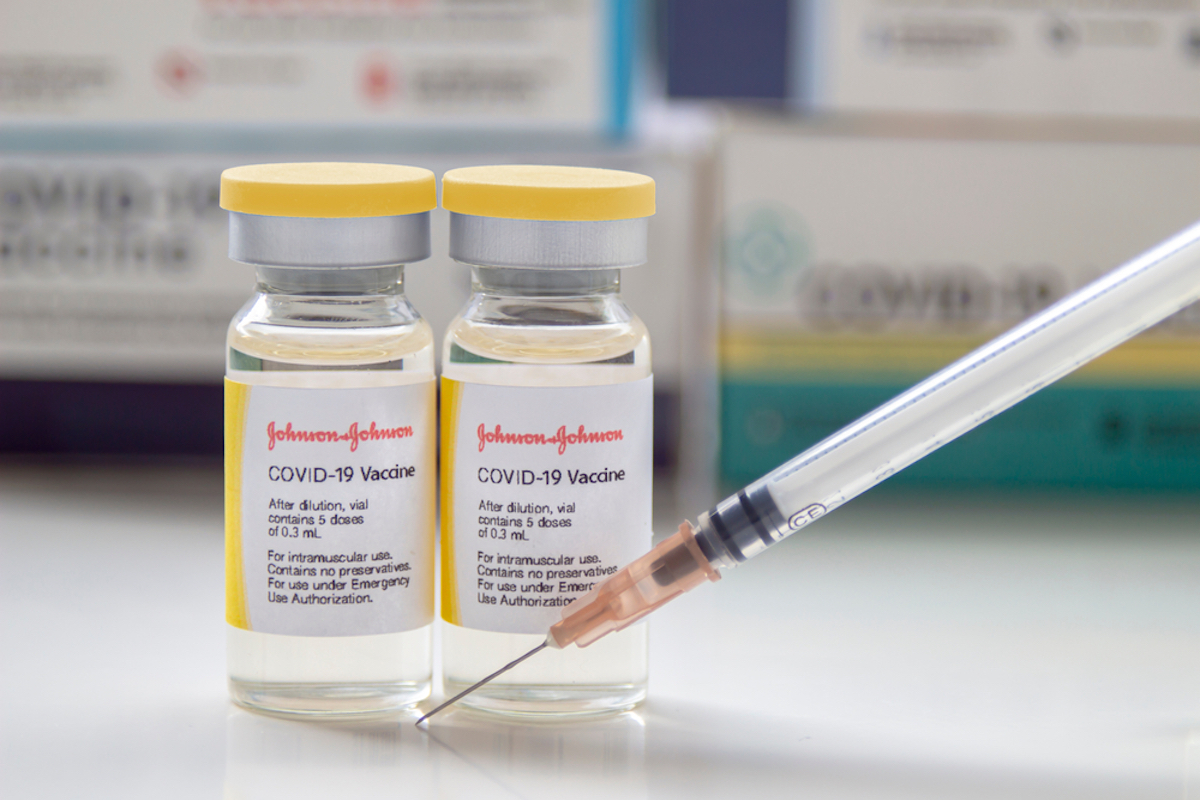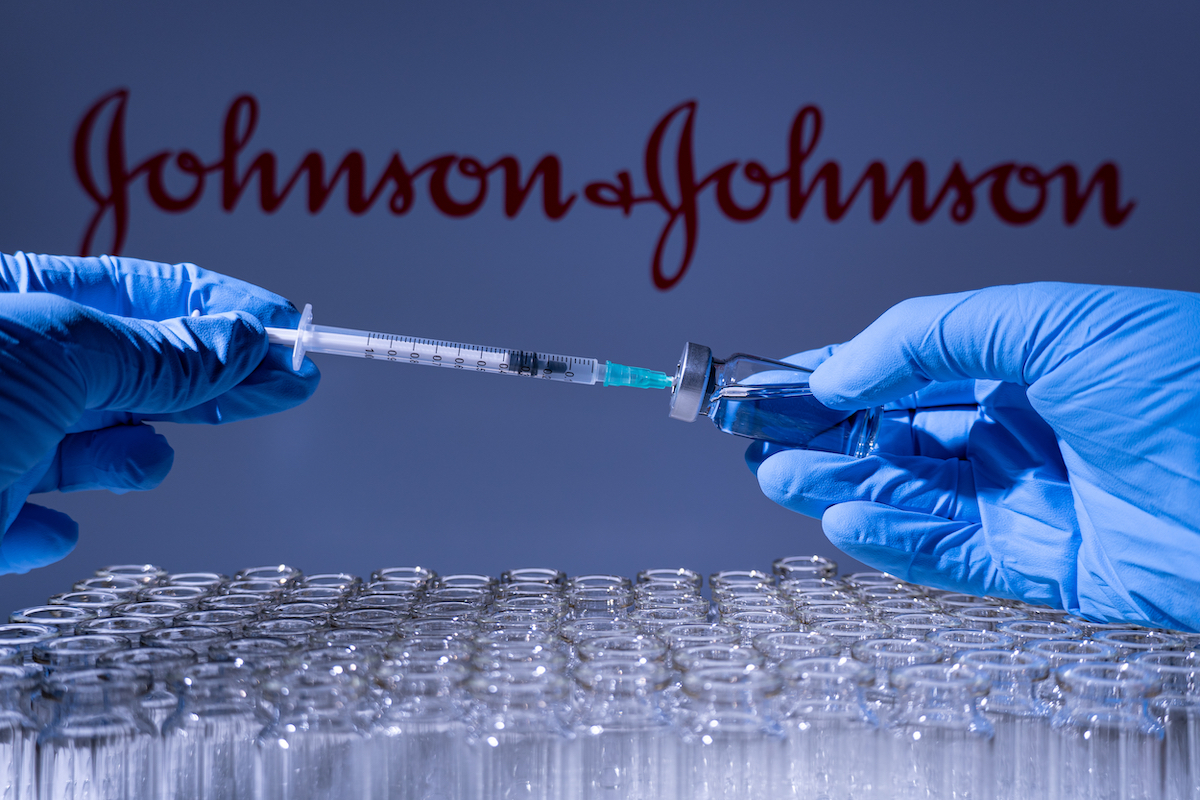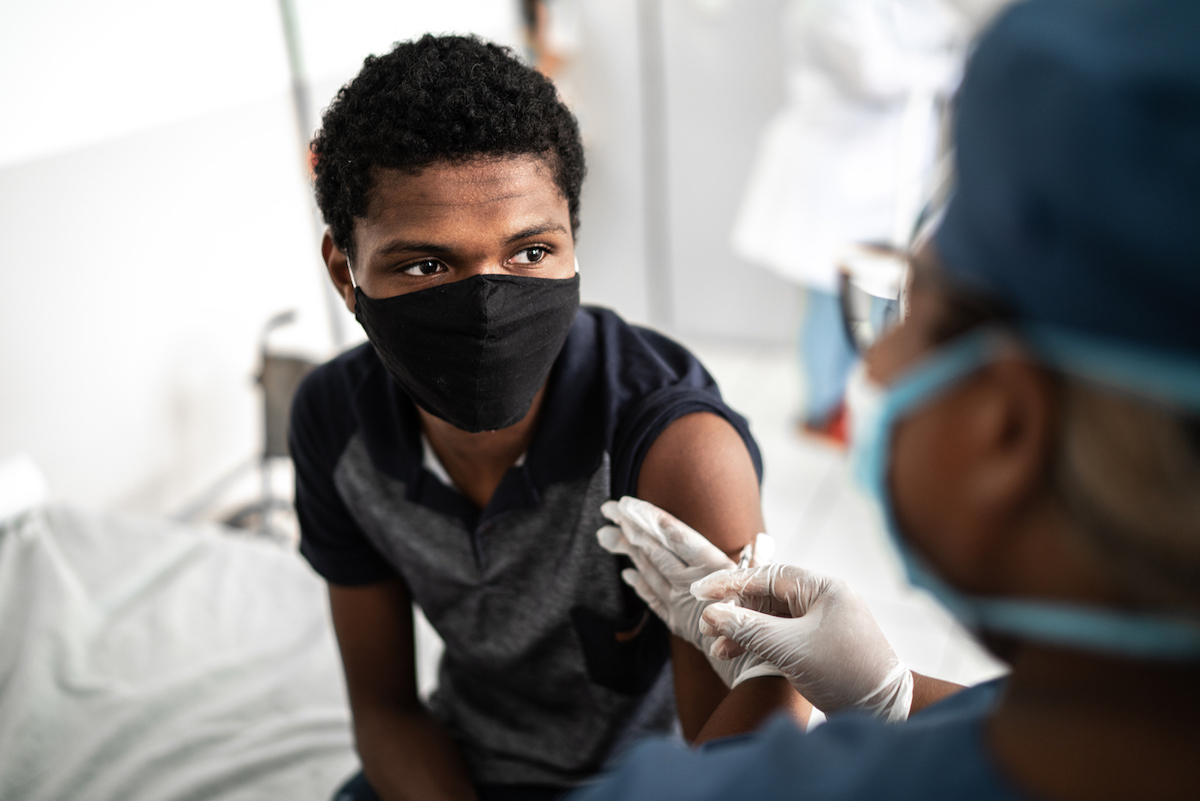Initial deliveries of the Johnson & Johnson vaccine could arrive as early as Tuesday, after a U.S. Centers for Disease Control and Prevention (CDC) advisory panel passed a vote unanimously on Sunday to recommend the vaccine for widespread use for Americans over the age of 18. During a Monday interview with Today, Johnson & Johnson CEO Alex Gorsky said, “Within the next 24 to 28 hours, Americans should start receiving shots in arms. They’re literally rolling out with the trucks as we speak.” And for more vaccine news you need to know, check out The Pfizer Vaccine May Be Less Effective If You Have This Common Condition. The original delivery is set to be 4 million doses. Johnson & Johnson is planning to ship more than 20 million doses of the vaccine by the end of March and 100 million doses by June, which is what’s promised to the U.S. Gorsky said during his Today interview that Johnson & Johnson hopes to be at “up to a billion by the end of 2021,” adding, “We’re gonna work hard to make sure that we follow through on all of those commitments.” And for more regular COVID updates sent right to your inbox, sign up for our daily newsletter. In addition to only requiring one shot rather than two, the Johnson & Johnson vaccine differs from the Pfizer and Moderna shots in that it doesn’t require freezing to maintain its efficacy, which should make it easier to transport across the country. While federal officials have stressed that all three vaccines should be evenly available nationwide, not needing special storage and transport facilities will make the Johnson & Johnson vials easier to deliver to harder-to-reach areas and communities. Officials are aware that vaccination rates are currently lagging in minority communities in particular for a number of reasons. A senior White House official quoted by Reuters said recently, “Even though we know the data are not complete, we do see these early patterns that suggest Black and brown Americans largely are getting vaccinated at rates lower than the representation in the general population.” One attempt to address this is the opening of up to 400 community vaccination centers in areas with large minority populations, along with mobile vaccination units. Without the need for freezing or a follow-up appointment for a booster shot, the hope is that this new vaccine from Johnson & Johnson will help to quickly close this gap and protect more Americans as quickly as possible. And for more news on this new vaccine, check out The Johnson & Johnson Vaccine Is 100 Percent Effective at This One Thing. There has been some discussion that Johnson & Johnson is the “weaker” vaccine, as its efficacy rate against symptomatic COVID in the U.S. is 72 percent versus Moderna and Pfizer’s roughly 95 percent protection. But Gorsky explained how those numbers don’t tell the full story. “What’s really important to remember about this vaccine is that when we conducted our clinical trials in October of 2020 to about January of 2021, this was during the time when the incidents rate of the virus was really just about at its peak,” he said on Today.ae0fcc31ae342fd3a1346ebb1f342fcb Gorsky said the clinical trials for the Johnson & Johnson vaccine were conducted around the world, with 40 percent of patients in Latin America and 15 percent in South Africa, where the Brazilian and South African variants respectively were growing increasingly dominant. “When you look at the numbers around the vaccine, the ones that are most important is it works 85 percent of the time against severe disease and it kept all the patients out of the hospital and from dying, even against these new and really challenging variants,” Gorsky said. Meanwhile, the Moderna and Pfizer vaccines weren’t tested against the variants until more recently, which is why those pharmaceutical companies are working on booster shots to protect against the variants now. And for more on the future of COVID vaccines, check out The Pfizer CEO Says This Is How Often You’ll Need a COVID Vaccine.


